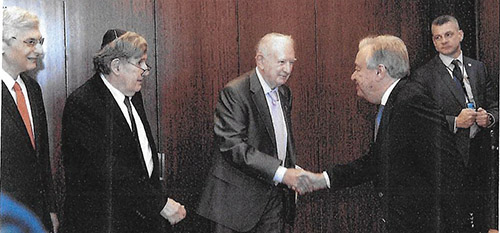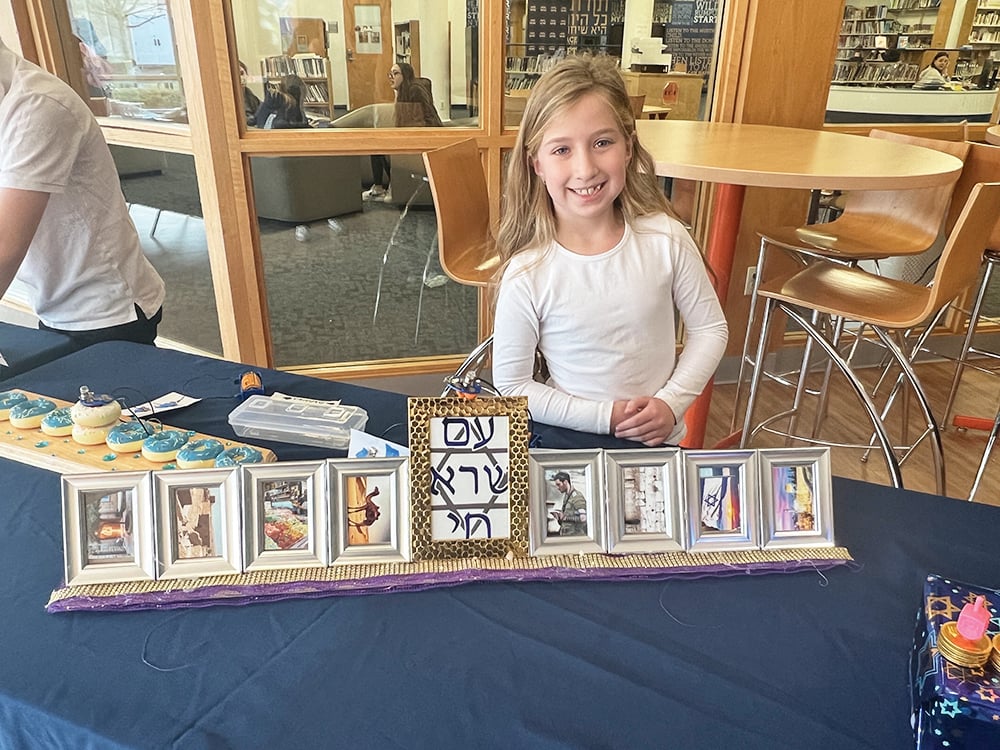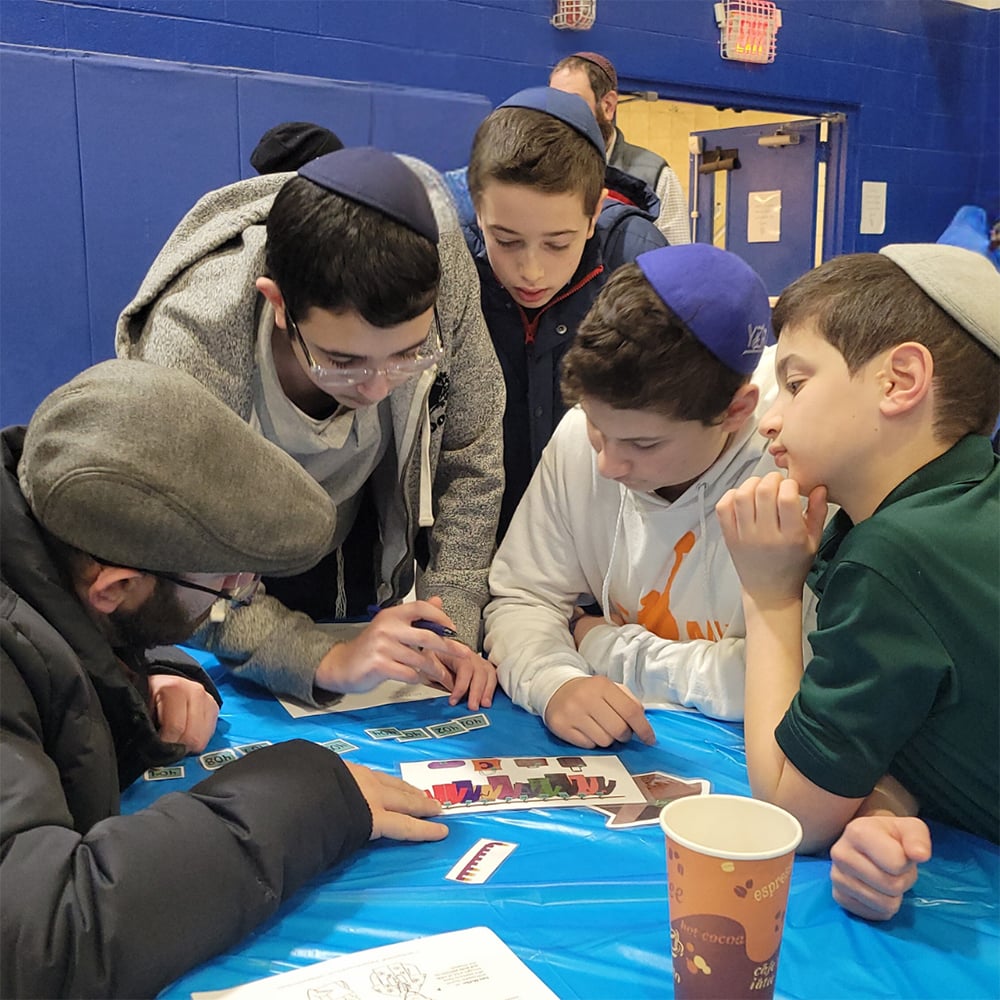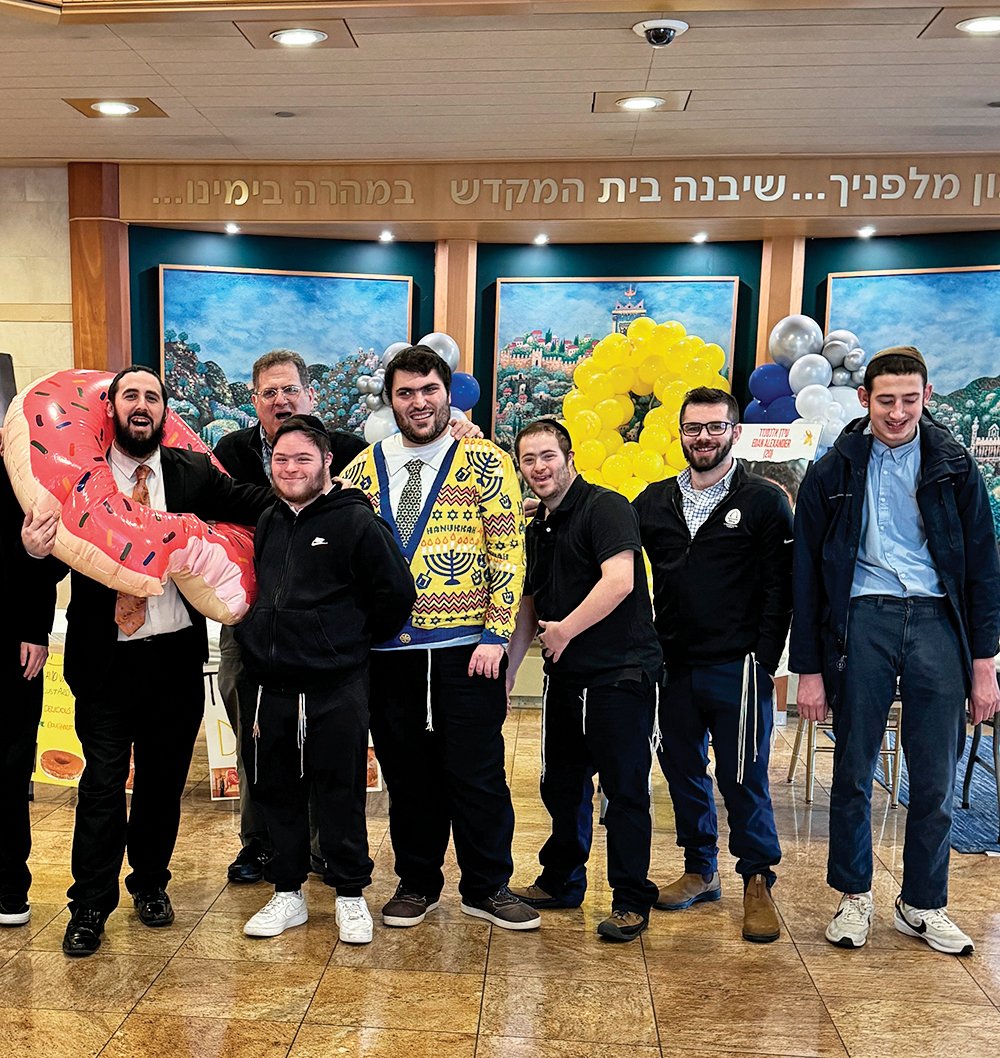

(continued from last week)
A guard came out and I assumed he was going to give me directions to the garage or take my car and park it somewhere. But no, he just told me to back it up a bit behind a white line, lock the car and bring the key in to the security desk inside. I asked him incredulously: “The car is going to stay here?” He just nodded his head and that was that. “Zedek” decorating the UN building. I left the keys at the guard desk and was told that whenever I am finished, I could come and pick up the keys.
The guard took me to a bench and said he would bring the rest of the group to me whenever they arrived. At 11:15 when everyone had assembled and had been introduced namely, Malcolm Hoenlein, CEO, Conference of Presidents, Arthur Stark, chairman, Conference of Presidents, David Machlis, chairman, March of the Living in the United States, George Klein, board chair, U.S. Museum of Jewish Heritage/Holocaust Memorial, Dr. Steven Malin, senior strategist, Allianz Global, we proceeded to the elevator, guided by the guard, and taken to the executive floor of the Secretary General (SG). At the elevator we were greeted by two ladies who guided us to a waiting room, where two photographers took hundreds of pictures. Only a few minutes later the two ladies guided us into the huge conference room.
I want to mention at this point, that although there was very tight security getting past the main gate, once in the building, there was no visible security, neither downstairs nor upstairs. I had also brought a book “Still Here” that I would try to present to the Secretary General, carrying it in a blue bag. At no time did anyone inspect the bag, or even asked what it contained.
Only 30 seconds after we had gotten to the conference room the Secretary General walked in with several ladies (in addition to the two who had guided us in). Introductions were made, pictures were taken of the SG with Hoenlein and Stark and then a picture with all of us (men only) with photographers snapping away for a few minutes. When they were done, we were invited to sit on one side of the long table and the SG sat on the other side with the three ladies who had come in with him. The two ladies who had brought us in stood by the wall.
The SG spoke for about 10-15 minutes about anti-Semitism and what had happened in Pittsburgh the week before etc. Then Hoenlein spoke and presented the book to the SG.
Although the book (two volumes in a case) is not for sale, I was able to obtain a copy from the conference. It contains a brief article and many pictures of every synagogue/place of prayer in Germany that was attacked on Kristallnacht. Aside from an extensive article and pictures on the Synagogues of Frankfurt, my hometown Bad Homburg is mentioned, as well as my father’s hometown (village) of Schmitten.
After Hoenlein, Stark spoke and then Hoenlein introduced me to the SG as being a “survivor” of Kristallnacht.
Since I don’t like to be unprepared when meeting a personality such as the SG, I had googled the day before to see how one properly addresses the SG. A UN website spelled out clearly that it should be either “Mr. Secretary General” or “Your Excellency.” Since I thought I might mess up Secretary General and call him General Secretary, I decided on the other option.
Well prepared as I was, I opened my mouth with “Your Excellency” and that is as far I got. “His Excellency” interrupted me with “Anyone calling me excellency, has to pay $1,000 to a charity.” I smiled and promised him it would not happen again. (Isn’t it good to be well prepared?)
Malcolm had asked me to tell my story about the Kristallnacht. That 48-hour period, November 9 and 10, should take about five minutes. When I had covered that period I stopped, but the SG motioned me to continue. While talking I kept looking at Malcolm out of the corners of my eyes, to see whether he was giving me any signals to stop, all the while the SG was motioning me to keep going. He listened to every word I was saying quite intently. I abbreviated my story, considering the SG might have some other important engagements (wars and shootings here and there) that he might want to attend to whenever I shut my mouth. I finished my story, he leaned across the table, shook my hand and I presented him with “Still Here,” explaining what it was and that he could even find my picture on page 100.
He gave both books to one of the ladies next to him and gave them some instruction. Maybe I will even get an acknowledgement from the UN.
We were guided back to the waiting room to pick up our belongings and then down to the entrance.
My car was still where I had left it, and I went home after a memorable event.
By Norbert Strauss
Norbert Strauss frequently speaks to groups to relay his family’s escape from Nazi Germany in 1941.













